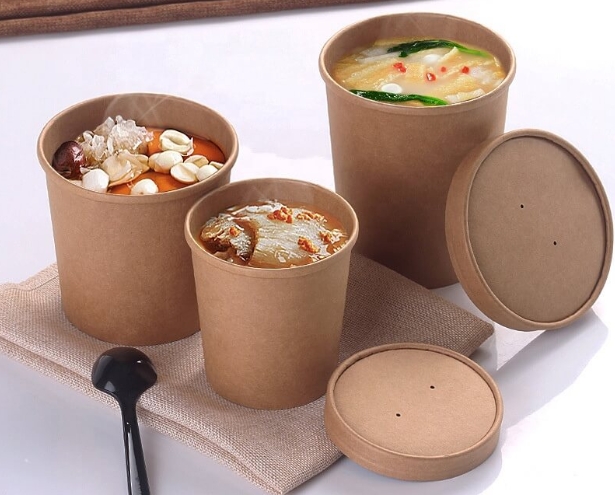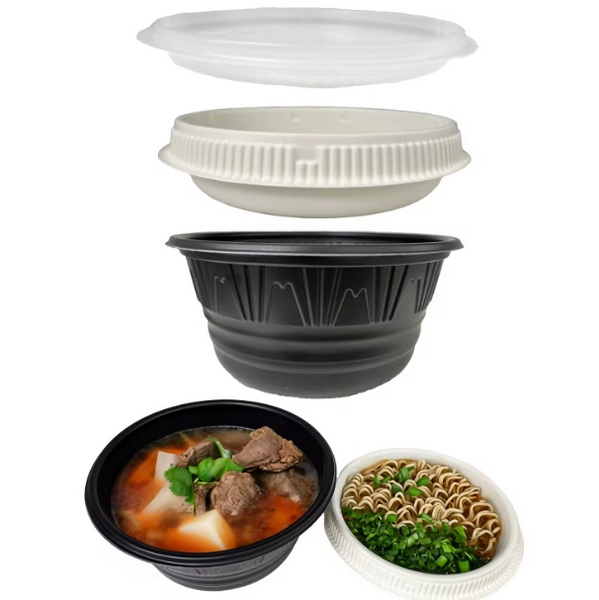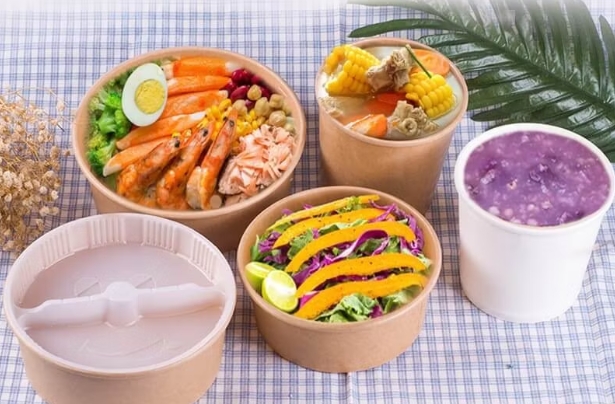
Content Menu
● Understanding Disposable Corn Starch Biodegradable Bowls
>> Composition and Manufacturing
● Environmental Benefits of Disposable Corn Starch Biodegradable Bowls
>> 1. Reduction of Plastic Waste
>> 2. Biodegradability and Compostability
>> 3. Renewable and Sustainable Resource
>> 4. Lower Carbon Emissions
>> 5. Non-Toxic and Food Safe
● Practical Advantages of Disposable Corn Starch Biodegradable Bowls
>> Durability and Versatility
>> Wide Range of Applications
● How Disposable Corn Starch Biodegradable Bowls Help Reduce Plastic Waste
>> 1. Replacing Single-Use Plastic Bowls
>> 2. Encouraging Circular Economy Practices
>> 3. Reducing Toxic Pollution
>> 4. Supporting Sustainable Agriculture
● Disposal and Recycling of Corn Starch Biodegradable Bowls
>> Proper Disposal Methods
>> Importance of Correct Disposal
● Comparison with Other Disposable Bowl Materials
● Challenges and Future Outlook
● Conclusion
● FAQ
>> 1. What are disposable corn starch biodegradable bowls made of?
>> 2. How long does it take for disposable corn starch biodegradable bowls to decompose?
>> 3. Are disposable corn starch biodegradable bowls safe for hot foods?
>> 4. Can disposable corn starch biodegradable bowls be recycled?
>> 5. How do disposable corn starch biodegradable bowls help reduce plastic pollution in oceans?
● Citations:
The global concern over plastic pollution has intensified the search for sustainable alternatives to single-use plastics, particularly in food packaging and tableware. Disposable corn starch biodegradable bowls have emerged as a promising solution, offering an eco-friendly alternative that addresses the environmental challenges posed by traditional plastic bowls. This article explores how disposable corn starch biodegradable bowls contribute to reducing plastic waste, their environmental benefits, practical uses, and the future of sustainable disposable tableware.

Understanding Disposable Corn Starch Biodegradable Bowls
Disposable corn starch biodegradable bowls are made primarily from cornstarch, a renewable plant-based material derived from corn. Unlike conventional plastic bowls made from petroleum-based polymers, these bowls are designed to break down naturally through microbial activity under suitable composting conditions. The manufacturing process often involves converting cornstarch into polylactic acid (PLA), a bioplastic that mimics the properties of traditional plastics but is biodegradable and compostable[3][7].
Composition and Manufacturing
- Cornstarch as Raw Material: Cornstarch is extracted from corn kernels and converted into sugars, which are fermented by microorganisms to produce lactic acid. This lactic acid is polymerized into PLA, which is then molded into bowls using injection molding or thermoforming techniques[3].
- Additives for Strength: Sometimes, PLA is blended with thermoplastic starch or other natural fibers like rice husk or wheat bran to enhance durability and heat resistance while maintaining biodegradability[3].
- Certifications: These bowls typically comply with food safety standards such as FDA, ISO, and SGS certifications, ensuring they are safe for hot and cold food contact[1].
Environmental Benefits of Disposable Corn Starch Biodegradable Bowls
1. Reduction of Plastic Waste
Traditional plastic bowls contribute significantly to environmental pollution because they take hundreds of years to decompose and often end up in landfills or oceans. Disposable corn starch biodegradable bowls decompose naturally within 6 to 12 months under industrial composting conditions, significantly reducing the volume of persistent plastic waste[1][2].
2. Biodegradability and Compostability
These bowls break down into harmless substances such as carbon dioxide, water, and biomass without leaving toxic residues. This process helps divert waste from landfills and reduces soil and water contamination associated with plastic pollution[3][8].
3. Renewable and Sustainable Resource
Cornstarch is derived from corn, a renewable agricultural crop that is widely cultivated. Unlike petroleum-based plastics, which rely on finite fossil fuels, cornstarch is sustainable and can be replenished annually. This renewable aspect lowers the carbon footprint associated with raw material extraction[5][6][14].
4. Lower Carbon Emissions
The production of PLA from cornstarch emits significantly fewer greenhouse gases compared to conventional plastic manufacturing. Studies show that manufacturing 1 kg of PLA can emit up to 60% less CO₂ than producing an equivalent amount of PET plastic, contributing to climate change mitigation[3][9].
5. Non-Toxic and Food Safe
Disposable corn starch biodegradable bowls do not contain harmful chemicals such as dioxins, heavy metals, or plasticizers that can leach into food. They are safe for use with hot and cold foods and are microwave and freezer safe, making them practical for everyday use[2][4][10].
Practical Advantages of Disposable Corn Starch Biodegradable Bowls
Durability and Versatility
- These bowls are stronger than paper bowls and resistant to leaks and spills, making them suitable for a variety of foods including soups, salads, desserts, and hot meals[2][4].
- They maintain their shape and integrity even when microwaved or frozen, offering convenience without compromising environmental benefits[4][10].
Wide Range of Applications
- Food Service Industry: Restaurants, catering services, and food delivery businesses use these bowls to reduce their environmental footprint while providing safe, high-quality service[1][7].
- Events and Parties: Disposable corn starch biodegradable bowls are ideal for weddings, corporate events, picnics, and outdoor activities, simplifying cleanup and waste management[1][7][10].
- Educational and Research Institutions: Schools and laboratories use them to promote sustainability and reduce plastic waste in their operations[7].
- Outdoor and Recreational Use: Campers and hikers prefer these bowls as they degrade quickly and do not contribute to long-lasting litter in natural environments[7].
How Disposable Corn Starch Biodegradable Bowls Help Reduce Plastic Waste
1. Replacing Single-Use Plastic Bowls
By substituting plastic bowls with disposable corn starch biodegradable bowls, the volume of plastic waste generated daily is substantially reduced. Since these bowls decompose rapidly, they do not accumulate in landfills or oceans, alleviating the burden on waste management systems and marine ecosystems[2][9].
2. Encouraging Circular Economy Practices
When properly disposed of in commercial composting facilities, these bowls transform into nutrient-rich compost that can be used to improve soil quality. This creates a closed-loop system where waste is converted into valuable resources, supporting sustainable agriculture and reducing reliance on synthetic fertilizers[8][11].
3. Reducing Toxic Pollution
Unlike plastic waste, which can release harmful toxins into the environment during degradation, disposable corn starch biodegradable bowls break down without releasing pollutants. This helps protect wildlife, soil health, and water quality, contributing to overall ecosystem preservation[3][12].
4. Supporting Sustainable Agriculture
The demand for cornstarch for biodegradable bowls incentivizes sustainable corn farming practices. While corn farming has environmental challenges, improvements in agricultural methods can enhance soil health and reduce chemical runoff, making the entire lifecycle of these bowls more sustainable[6][14].

Disposal and Recycling of Corn Starch Biodegradable Bowls
Proper Disposal Methods
- Industrial Composting: These bowls require industrial composting facilities with controlled temperature (above 60°C), humidity, and microbial activity to decompose fully within 2 to 6 months[11].
- Avoid Home Composting: Home compost systems often lack the necessary conditions for effective breakdown of PLA-based cornstarch bowls[11].
- Recycling: Some facilities recycle PLA materials by melting them into new products, but this requires separation from conventional plastics to avoid contamination[6][11].
Importance of Correct Disposal
Even biodegradable products must be disposed of responsibly. Throwing cornstarch bowls into oceans or natural environments without proper composting can delay decomposition and harm wildlife. Proper waste segregation and disposal infrastructure are essential to maximize environmental benefits[2][11].
Comparison with Other Disposable Bowl Materials
| Feature | Disposable Corn Starch Biodegradable Bowl | Plastic Bowl | Paper Bowl | Bamboo Bowl |
| Biodegradability | Yes, decomposes in 6-12 months | No, takes hundreds of years | Yes, but less durable | Yes, durable and compostable |
| Renewable Material | Yes, made from corn | No, petroleum-based | Yes, made from wood pulp | Yes, made from bamboo fibers |
| Heat Resistance | High, microwave and freezer safe | High | Low, may leak or break | Moderate |
| Toxicity | Non-toxic, food safe | Can leach harmful chemicals | Non-toxic | Non-toxic |
| Environmental Impact | Low carbon footprint, compostable | High carbon footprint, pollution | Moderate | Low carbon footprint |
| Cost | Moderate, becoming more affordable | Low | Low | Higher |
Challenges and Future Outlook
While disposable corn starch biodegradable bowls offer many benefits, challenges remain:
- Composting Infrastructure: Limited availability of industrial composting facilities restricts effective disposal in many regions[11].
- Agricultural Impact: Corn farming can contribute to soil depletion and pesticide use; sustainable practices are needed to mitigate these effects[14].
- Cost and Availability: Although prices are decreasing, biodegradable bowls may still cost more than plastic alternatives, affecting widespread adoption[4][7].
Ongoing innovation in material science and increased consumer awareness are expected to drive improvements in the performance, affordability, and accessibility of disposable corn starch biodegradable bowls, further reducing plastic waste globally[3][9].
Conclusion
Disposable corn starch biodegradable bowls represent a significant advancement in the effort to reduce plastic waste and environmental pollution. Made from renewable resources, these bowls offer durability, safety, and compostability, making them a practical and sustainable alternative to traditional plastic bowls. By replacing single-use plastics with biodegradable options, supporting composting infrastructure, and promoting responsible disposal, we can substantially mitigate the negative impacts of plastic pollution on ecosystems and human health. As adoption grows and technology evolves, disposable corn starch biodegradable bowls will play a crucial role in fostering a circular economy and protecting our planet for future generations.

FAQ
1. What are disposable corn starch biodegradable bowls made of?
Disposable corn starch biodegradable bowls are primarily made from cornstarch, which is converted into polylactic acid (PLA), a biodegradable bioplastic. Sometimes natural fibers like rice husk or wheat bran are added to improve strength and heat resistance[3][7].
2. How long does it take for disposable corn starch biodegradable bowls to decompose?
Under industrial composting conditions with adequate heat and moisture, these bowls decompose within 6 to 12 months. In natural environments without proper conditions, decomposition may take longer[1][11][13].
3. Are disposable corn starch biodegradable bowls safe for hot foods?
Yes, these bowls are designed to be heat-resistant and are safe for serving hot foods. They are microwave and freezer safe, maintaining their shape without leaking or breaking[4][10].
4. Can disposable corn starch biodegradable bowls be recycled?
They can be recycled but require separation from conventional plastics to avoid contamination. Specialized recycling facilities melt PLA into new products. However, composting is generally the preferred disposal method[6][11].
5. How do disposable corn starch biodegradable bowls help reduce plastic pollution in oceans?
By replacing plastic bowls with biodegradable alternatives, the amount of plastic waste entering oceans is reduced. These bowls break down naturally without harming marine life, unlike persistent plastic debris[2][9].
Citations:
[1] https://biogreensg.com/product/biodegradable-bowl/
[2] https://ecoclicky.com/en/biodegradable-bowls-materials/
[3] https://www.bioleaderpack.com/what-are-biodegradable-bowls-made-of/
[4] https://www.hydepackage.com/info-detail/advantages-of-using-disposable-cornstarch-bowls
[5] https://www.lansincommodity.com/info/advantages-of-disposable-cornstarch-containers-80562068.html
[6] https://www.atyourservous.com/cornstarch-packaging-faq/
[7] https://www.alibaba.com/showroom/biodegradable-corn-starch-bowl.html
[8] https://www.atyourservous.com/benefits-of-cornstarch-packaging/
[9] https://www.wafadpm.com/news/industry-news/ecofriendly-dining-the-rise-of-cornstarch-bioplastic-biobased-bowls-revolutionizing-food-packaging.html
[10] https://www.mviecopack.com/12oz-350ml-eco-friendly-biodegradable-corn-starch-bowl-product/
[11] https://www.greencompostables.com/blog/cornstarch-packaging
[12] https://www.eco-pack.com/news/benefits-of-using-biodegradable-bowls-77168994.html
[13] https://www.bioleaderpack.com/biodegradable-tableware-detailed-questions-and-answers/
[14] https://www.zerowaste.com/blog/the-zero-waste-materials-series-cornstarch/
[15] https://pakfactory.com/blog/why-switching-to-cornstarch-packaging-is-beneficial-to-your-business/
[16] https://www.greenolives.com.cn/how-to-recognise-corn-starch-packaging-6-things-you-must-know-between-corn-starch-based-plastic-and-our-biodegradable-corn-starch-tableware/
[17] https://www.bioleaderpack.com/he/product/disposable-corn-starch-bowls/
[18] https://www.bioleaderpack.com/product/disposable-compostable-plastic-bowls-12oz-cornstarch/
[19] https://www.hydepackage.com/info-detail/advantages-of-using-disposable-cornstarch-bowls
[20] https://b-ecopackaging.com/cornstarch-food-containers/
[21] https://www.hydepackage.com/info-detail/advantages-of-cornstarch-tableware
[22] https://www.easyngreen.com/corn-starch-food-packaging-a-sustainable-alternative.html
[23] https://www.greencompostables.com/blog/cornstarch-food-packaging
[24] https://drbio.in/compostable-cutlery-made-from-corn-starch/
[25] https://ecoclicky.com/en/corn-starch-based-biodegradable-tableware/
[26] https://pakfactory.com/blog/why-switching-to-cornstarch-packaging-is-beneficial-to-your-business/
[27] https://biotableware.en.made-in-china.com/product/oBVxICMHLORD/China-Disposable-Compostable-Multifunctional-Corn-Starch-100-Biodegradable-Food-Bowl.html
[28] https://singaporemagazine.sif.org.sg/Stories/Data/Stories/From-Corn-to-Bioplastic_2017Issue2
[29] https://goodwilleverest.com.my/corn-starch-containers/
[30] https://biogreensg.com/eco-friendly-option-of-corn-starch-packaging/
[31] https://www.bioleaderpack.com/is-cornstarch-tableware-really-compostable/
[32] https://ecoclicky.com/en/uses-of-corn-starch-in-sustainable-products/
[33] https://www.bagasseproduct.com/product/cornstarch-bowl.html
[34] https://wenzhouqiangsen.en.made-in-china.com/product/JOEfxlrZIIAi/China-Eco-Friendly-Biodegradable-Cornstarch-Disposable-Small-Round-Bowl-with-Lid.html
[35] https://wenzhouqiangsen.en.made-in-china.com/product/ExAYhswvsHUm/China-Eco-Friendly-Biodegradable-Cornstarch-Soup-Bowl-Disposable-Lunch-Bowl-for-Hot-Cold-Use-Perfect-for-Ice-Cream-Cereal-Soup-Snack.html
[36] https://ecospak.en.made-in-china.com/product/nFLxUOEdZgcZ/China-Cornstarch-Bowl-Disposable-Environmental-Friendly-Tableware-Biodegradable-270ml-Big-Bowl-Hotel-Disinfection-Disposable-Tableware.html
[37] https://www.bio-one.in/faqs
[38] https://greentableware.hk/en-us/home/faq
[39] https://www.bioleaderpack.com/product-category/cornstarch-bowl-cup/
[40] https://ecotableware.com.au/products/round-bowl
[41] https://www.sustainablplanet.com/blog/our-guide-to-the-regulation-of-disposable-plastic-tableware
[42] https://www.easyngreen.com/eight-common-questions-about-ecofriendly-disposable-utensils.html
[43] https://alltableware.en.made-in-china.com/product/pEPrnZQJzxYh/China-Biodegradable-Cornstarch-Bowl-12oz-16oz-32oz.html
[44] https://www.greenolives.com.cn/faq-of-biodegradable-corn-starch-tableware-biodegradable-disposable-dinnerware/
[45] https://getbiopak.com/buying-guide-cornstarch-biodegradable-tableware/
[46] https://www.hydepackage.com/info-detail/advantages-of-cornstarch-trays-sustainable-and-versatile
[47] https://www.greenecoparadise.com/biodegradables/5-reasons-to-get-cornstarch-bowl/
[48] https://www.eco-pack.com/news/benefits-of-using-biodegradable-bowls-77168994.html

















